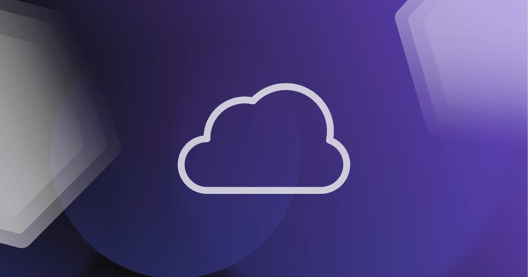
- By Natalie Gray
- ·
- Posted 12 Mar 2024
Rodrigo Nascimento Joins techUK’s Cloud Leadership Committee
Rodrigo Nascimento, Head of Cloud & Platform Engineering at Codurance has joined techUK’s Cloud Leadership Committee, alongside other UK Cloud..

As software grows and becomes more complex, so does the amount of processing power, the number of systems, the number of users and more importantly, licensing requirements change. A major challenge in keeping control of a growing system is to make sure that the machines are licensed correctly—whether it is your windows machines, your SQL database, PBX or CRM software. For a moment, let’s pretend no one is watching when I was to ask you, whether you knew every piece of software you were running and how much it cost, would you know it?
Those who can answer yes are those operating in the minority. The fact is it’s hard to maintain control of all the different licenses you have as even just managing a PBX at a small business will have upwards of 100 licenses alone to maintain. Take a 30 person small business as an example:
It becomes a nightmare to keep track of what you have purchased and what you are running. This isn’t just the case for the customer but also a massive problem for software vendors. In 2017, a court case brought this issue out into the open. Tier 1 software vendor SAP alleged that £54 million worth of additional licences and maintenance fees should be paid by one of its customers owing to third party software integrating with its solution.
New business models are emerging that require vendors to adapt their offerings to meet the changing needs of the market. Being able to offer flexible payment models, manage entitlements, and control use, as well as track and aggregate product-usage data to inform business decisions and enable the continued innovation, are just some of the top software licensing challenges affecting software publishers today.
IT spending is seeing a steep increase as we progress into the 21st century. It is the #1 spending growth category: Software. IT spending on software grew by 8.6% in 2017 and is expected to continue leading IT to spend growth in 2018 per recent Gartner reports. Researchers have found that the average cost of unused software within companies comes to about $259 per desktop. Over a year, that average accounts for a 37% waste per company, whether due to a lack of communication or a poor asset management program.
Throwing that much money out of the window on unused resources is enough to make anyone wary of software. Add on the additional costs of hardware, software maintenance, security audit costs, and any potential fines, you may see should you not be in compliance, and it might make you want to run for the hills. In this article, I will outline several ways to manage your software cost.
Gaining a detailed overview of your software seems like a no brainer decision when it comes to understanding your software usage. It is not just knowing what you have purchased, but gaining a deeper understanding of the types of licenses that you have bought and how they can be used. In doing this, you’ll not only have an account of the mission-critical applications which sustain your business but also gain a deeper understanding into which applications are business-critical.
In a managerial role, it is critical to understand who in your organisation is using which software and how it aligns with their roles. We all know that there is a lot of movement within the companies we have worked for, when personnel change roles or leave the company, their existing software is no longer required but payment continues to be taken from your budget pot.
By having a clear overview of what you’re spending and where it’s going, your organisation will be able to make targeted procurement decisions without pointless expenditure.
Once you have completed a comprehensive overview of your organisation, it is now essential to know if you have the proper licenses? With so many different licensing options and so many licenses needing to be managed, it can become challenging to know which licenses are needed? Or am I paying for unnecessary licenses? Taking on this challenge is no small feat, but approaching it from the right position, with the correct optimisation processes, you can create a clear vision over your software portfolio. To accomplish this task, you need to have a clear understanding of the software and services which your organisation is currently using. Not only that, but you need to have a clear view of the terms of those agreements and see where their excess cost is coming from and where you may be lacking.
Now that you have optimised your software and clarified what the excess cost you can now go back to the software vendors in a strong position and negotiate to reduce your cost. It is only now when you have a clear view of your company, you can deal accordingly, and start to dive deeper into the nitty-gritty of our software contracts and optimise them accordingly.
It’s important to know what competing software is doing, knowing what they are offering, what you may not be getting from your current vendor, so you have a negotiation position. Due to earlier due diligence, you’ll also be in a position of strength for negotiating your next software contract. This then allows you to start introducing discounts into your contracts in exchange for long value commitments, while also heading into decisions with all the information you need to make a sound decision for the future of your organisation.
As a company’s software needs change, the business must make commercially-targeted decisions to ensure those needs are met at a competitive and sustainable cost.
As acquisition occurs and with this people change, the furniture becomes different, there’s always moving parts within an organisation. As these things happen, it’s only human to let things slip. However, it’s becoming ever more critical to understand the multiple software licensing agreements across different project groups or various sites. Separate licenses often exist because there are different versions of the same software in use across the organisation.
Once you’ve assessed whether this is the case for your business, you can look to seek a consolidated license that suits all of them. There are multiple different ways to tackle this issue which have varying degrees of success. We have the IT manager who believes he can keep it all in his head, in contrast to the enterprise organisation which as a SAM (Software Asset Management) to consolidate all their software.
Whatever method you choose can have a dramatic effect on the licensing situation within your organisation and your future business requirements. The consolidation of existing packages can quickly lead to savings without compromising on functionality.
Managing your software isn’t just about managing the different keys that you have access to, it becomes about managing the additional personnel who have an impact on your software licensing cost. Different licenses have different conditions. This is where understanding the difference between concurrent licenses and user licenses comes into play.
User licensing can require you to have a separate license for each person accessing the system independent of time and place. At the same time, concurrent licensing can allow you to have as many users as you’d like but having the ability only to have a specific number login at a time. This is where it becomes vital to know how to manage each license so you can have the ability to minimise the number of licenses in use at any one time.
In addition to this, it is essential to have administrative control over each license that is in use and control any new software which is being installed. This can prevent your business from unnecessary spending.
The cloud offers the opportunity, regardless of size, to save substantial cost through the reduction of infrastructure, utilities, equipment and software. Too many times, I have been involved in a new IT project, whether it be an update to our NAS, a new warehousing solution or a new phone system. One of the biggest obstacles is ordering and procuring the correct hardware for the job. Once installed, you then have the proper position of hoping your equipment will last you a lengthy amount of time to get an ROI on your decision.
Moving to the cloud offers a more flexible and agile position to make these decisions without causing a crippling effect on the business. Investing in cloud computing allows you to take advantage of opportunities which weren’t available before, you can ramp up additional processing power or expand your storage without the bottle of hardware and time. You can convert the capital expenditure into operational and completely change your company's financial forecast. You only pay for what you need, when you use it, transferring you to pay-as-you-go, subscription-based cost structure. The initial investment is substantially lower and allows your business the flexibility to innovate.
Software has evolved dramatically in a rapid fashion, and it has never been more critical as it is today to have a deep understanding of where your organisation is. It’s vital to know that while this can seem like a daunting task, it can quickly evolve into a critical strategic tool. Leveraging your software into your business plan has never been as crucial as it is today, my plea is not to let it overwhelm you but instead embrace the ever-changing world and use it to your advantage.

Rodrigo Nascimento, Head of Cloud & Platform Engineering at Codurance has joined techUK’s Cloud Leadership Committee, alongside other UK Cloud..

Testing web apps is hard work. You've probably found that even the code environment can be hostile to testing, with windows, documents, event..

In the constant pursuit of improvement, the concept of Developer Experience (DevEx) has become more relevant than ever. In recent years, DevEx has..
Join our newsletter for expert tips and inspirational case studies
Join our newsletter for expert tips and inspirational case studies